- Guides
-
Climbs
-
Climb Elbrus
- Elbrus individually
- Elbrus from the South, 9 days
- Elbrus from the South, 7 days
- Elbrus from the South in 1 day
- Elbrus from the North
- Elbrus Two Summits
- Elbrus Traverse South to North
- Elbrus Traverse North to South
- Elbrus "Cross" from South
- Elbrus "Cross" from North
- Kazbek+Elbrus
- Elbrus from the West
- Elbrus by helicopter
- Elbrus holidays, 9 days
- Elbrus holidays, 7 days
- Elbrus by weekend
- Under 5000 m
- 5000+ meters
- 6000+ meters
- 7000+ meters
- 8000+ meters
-
Climb Elbrus
- Trekking
-
Adventures
- Tour to Morocco for New Year
- Morocco: Toubkal and the mysteries of the Sahara
- Peru: Ancient Inca culture
- Peru: Machu Picchu and Amazonia
- Brazil: Amazon
- Brazil: Pantanal, Iguassu, Rio
- Iran: Ancient Persia from Tehran to Isfahan
- Chile: from the Atacama to Tierra del Fuego
- Safari Tanzania
- Safari Kenya
- Safari Uganda
- Lycian way
- Bhutan, the Tour of Dragon Trails
- Useful
- About
Climb Chimborazo and Cotopaxi
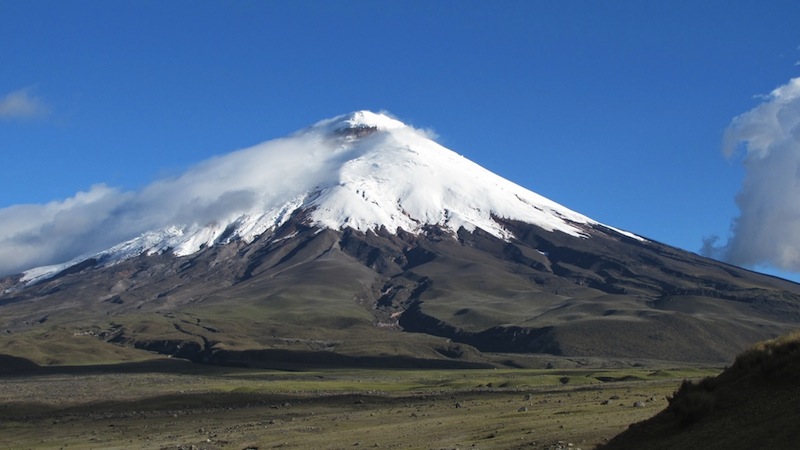
- Height (m)
- 5897, 6384
- Duration
- 11 days
- Difficulty
- Moderate
- Continent
- South America
- Children
- From 14 years old
- Accomodation
- Hotels only
Temporarily unavailable
About the tour This unique itinerary has been specially designed to allow you to climb the following three mountains in ten days – from the easiest trekking Mt Pasochoa (4200m) to the Chimborazo Volcano (6310m), the most beautiful and highest in Ecuador. Ecuador lies in the equatorial zone of South America. It borders Colombia to […]
About the tour
This unique itinerary has been specially designed to allow you to climb the following three mountains in ten days – from the easiest trekking Mt Pasochoa (4200m) to the Chimborazo Volcano (6310m), the most beautiful and highest in Ecuador.
Ecuador lies in the equatorial zone of South America. It borders Colombia to the north and Peru to the east. Ecuador’s western regions are bordered by the Pacific Ocean.
Geographically, the country is divided into three zones – the coastal lowlands, the central mountainous region with the high Andes, and the eastern side (Amazon rainforests). The country is heavily influenced by volcanic activity, with around 20 active volcanoes in the area stretching from Mount Sangay to the border with Colombia. The most famous of these volcanoes are Pichincha (4789m), which towers over the city of Quito, Illiniza (5212m), Cotopaxi and the giant Chimborazo (6310m), the highest peak in Ecuador.
Although some of these volcanoes are very old and long extinct (such as Chimborazo), others – particularly Cotopaxi and Sangay – are still full of activity.
Mountains rising high into the air, fire erupting from the earth’s interior, high altitude cold and tropical sun – all this has made Ecuador one of the most diverse countries in the world. There are over 20 national parks and ecological reserves in the country.
The capital of Ecuador is Quito (coordinates: 0 degrees, 0 minutes, 0 seconds – as defined by geographers 24 km from Quito). The line of the equator passes there, at an altitude of 3000m above sea level. When visiting the monument on the equatorial line, tourists stand with one foot on the northern hemisphere and the other on the southern hemisphere.
Quito is the oldest Indian city in South America and one of the most beautiful, nestled on the slopes of the Pichincha volcano, between two deep gorges carved by mountain streams.
The sky is a deep blue and the air is fresh, transparent and cool. This is the reason why this place was named Quito, which means “mountain settlement” in the dialect of the ancient Indian tribe of Quitus.
Climb of Chimborazo and Cotopaxi.
Day 1. Arrival and accommodation in Quito, the capital of Ecuador, followed by a sightseeing tour to get an idea of the local culture. Dinner and instructing the group. Overnight in hotel or guesthouse.
Day 2. Walking tour in Quito for better acclimatisation.
Day 3. Hike to the Pichincha volcano (4700m), the first part of which – from 3117m to 3945m – will be done by taking the Teleferico cable car (the fourth highest in the world) from the station in the city centre. Pichincha is an active volcano that offers stunning views over the city. During the volcano’s 1999 eruption, Quito was covered by several centimetres of ash. Overnight in hotel or guesthouse.
Day 4. Jeep ride to the Chilkabamba Refuge at 3700m, one of the most romantic and beautiful places in Ecuador. The lodge has electricity and hot showers.
Day 5. Ascent to the Central Riminahui volcano (4600m) and overnight at the refuge.
Day 6. Ascent of Cotopaxi (5897 m), starting around midnight or a little later. In the morning we will reach the summit of one of the highest active volcanoes in the world. Another interesting fact about Cotopaxi is that it is the second closest volcano to the Earth’s core (the first being Chimborazo). On the same day we will descend to the jeep and take a drive to the town of Banos for an overnight stay in a hotel. This town is quite popular with both local and international tourists, despite the fact that Tungurahua’s volcanic activity is high and even forced the evacuation of Banos’ population in 1999/2000. Other popular tourist attractions include the Basilica, the waterfalls near Banos, the jungle stretching to Puyo and Micahualli. Tungurahua – also known as the “Black Giant” – is the largest (but not the highest) volcano in Ecuador. It is easy to climb as Banos is located on its slopes. Regular drilling of boreholes makes it possible to observe the volcano’s activity and guarantees the safety of locals and tourists.
Day 7. Reserve day to climb Cotopaxi in case of bad weather on day 6.
Day 8. Drive to the Chilkabamba Refuge followed by a climb to the Karrel Refuge (4850m) and another one hour climb to the Wimper Refuge (5050m) followed by rest.
Day 9. Ascent of Chimborazo, starting at midnight or a little later. In the morning we will reach the summit of Chimborazo, the highest volcano in Ecuador and the place where the distance to the sun is the shortest, even shorter than from Everest. Since we will reach the refuge by midday, we will descend to our jeeps the same day and drive back to Quito. Overnight at the hotel.
Day 10. Rest day or reserve day for climbing Chimborazo, spent in Quito.
Day 11. Flight home.
The price of climbing Ecuador's volcanoes includes:
- Mountain guides (in the proportion of 1 per 3 climbers on volcanoes higher than 5000 m).
- All transfers mentioned in the itinerary above, including the gondola lift.
- All accommodation mentioned in the itinerary above – hotels and refuges.
- Permits for climbing.
- Meals all through the climbing (prepared by a cook), but only breakfasts when in cities.
- Sightseeing tours mentioned in the itinerary above.
- All group equipment.
Not included in the price of climbing Ecuador's volcanoes:
- International and local flights.
- Personal equipment.
- Medical insurance for mountaineering.
- Dinners and meals in cities.
- Expenses incurred due to changes in the above itinerary.
- Rescue and evacuation services.
- Tips.
- Any costs caused by the changing of the programs
You may also like
-
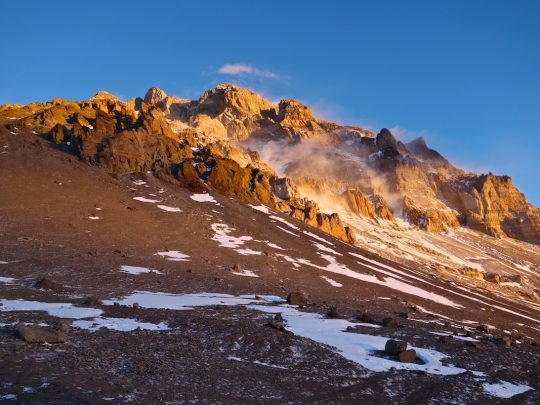 4,300 $
4,300 $Climb Aconcagua, 17 days
- Height (m)
- 6957
- Duration
- 17 days
- Difficulty
- Moderate
- Continent
- South America
- Children
- From 14 years old
- Accomodation
- There are tents
-
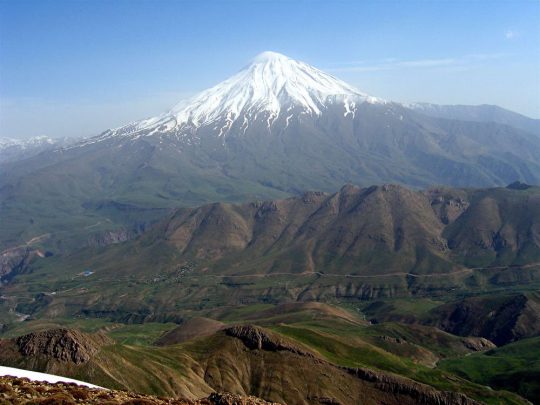 1,500 $
1,500 $Climb Damavand
- Height (m)
- 5610
- Duration
- 7 days
- Difficulty
- Low
- Continent
- Asia
- Children
- From 12 years old
- Accomodation
- Without tents
-
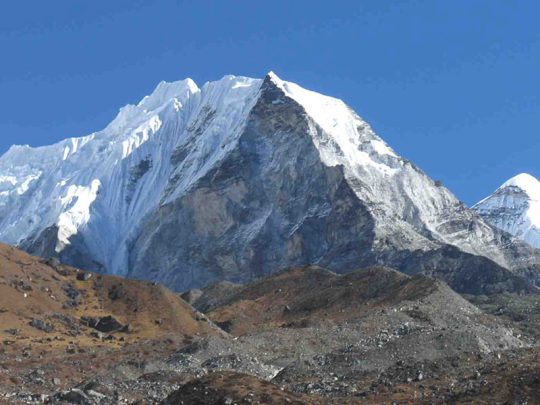 2,700 $
2,700 $Climb Island peak
-
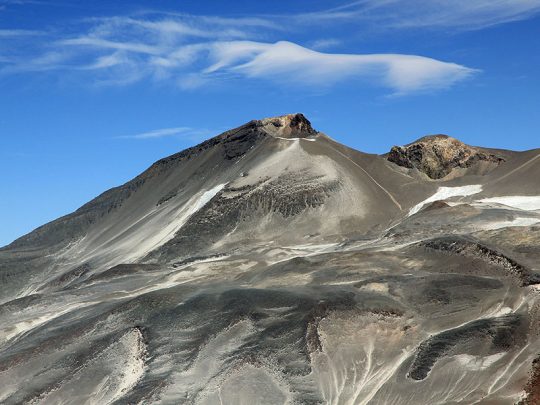 3,160 $
3,160 $Climb Ojos del Salado
- Height (m)
- 6893
- Duration
- 15 days
- Difficulty
- Moderate
- Continent
- South America
- Children
- From 14 years old
- Accomodation
- There are tents